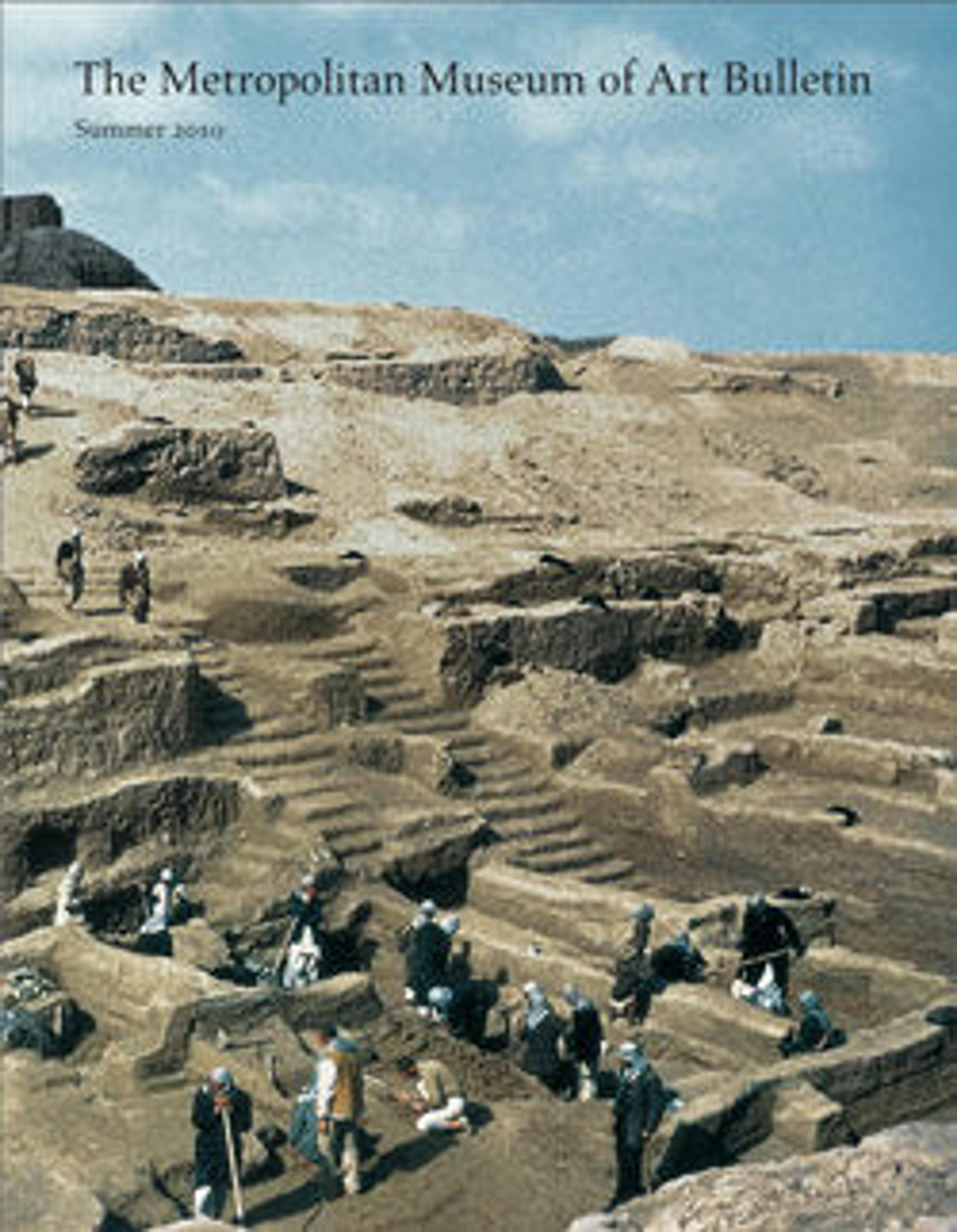Furniture leg (?) with a recumbent lion supporting a deity
Excavations at Hasanlu in Iran yielded a large number of carved ivory fragments, many in a distinctive style found only at this site, which probably decorated wooden furniture or were used as small precious objects such as boxes. The citadel at Hasanlu was attacked and destroyed around 800 B.C., most likely by military forces of the powerful state of Urartu, centered in present-day Armenia, eastern Turkey, and northwestern Iran. In the fire that destroyed the citadel, many objects were crushed and shattered. The blackened appearance of most of the Hasanlu ivories is due to their exposure to high temperatures at the time of the citadel’s destruction.
This large sculpted piece of ivory was probably either a furniture leg or a handle to an implement. At top are the feet of a deity who stands on the back of a roaring lion, carved in the round. The section directly below this is missing, leaving the tang that attaches this piece to the one below it exposed. A cylindrical segment shows three male figures carved in relief. Two of them face right, approaching a third at the right side of the scene who faces them. All are shown with head and legs in profile and torso in front view. The round holes drilled for the eyes once held inlays. The central figure is bearded, unlike the other two, and drinks from a vessel held in his right hand. The meaning of the scene is mysterious, but a mace, shown head downward between the central figure and the figure he faces, suggests peaceful intent. The base is extensively damaged.
This large sculpted piece of ivory was probably either a furniture leg or a handle to an implement. At top are the feet of a deity who stands on the back of a roaring lion, carved in the round. The section directly below this is missing, leaving the tang that attaches this piece to the one below it exposed. A cylindrical segment shows three male figures carved in relief. Two of them face right, approaching a third at the right side of the scene who faces them. All are shown with head and legs in profile and torso in front view. The round holes drilled for the eyes once held inlays. The central figure is bearded, unlike the other two, and drinks from a vessel held in his right hand. The meaning of the scene is mysterious, but a mace, shown head downward between the central figure and the figure he faces, suggests peaceful intent. The base is extensively damaged.
Artwork Details
- Title:Furniture leg (?) with a recumbent lion supporting a deity
- Period:Iron Age II, Hasanlu Period IV
- Date:ca. 9th century BCE
- Geography:Iran, Hasanlu
- Culture:Iran
- Medium:Ivory
- Dimensions:H. 2 13/16 x W. 1 3/4 x D. 3 7/16 in. (7.2 x 4.5 x 8.7 cm)
- Credit Line:Rogers Fund, 1965
- Object Number:65.163.1a–c
- Curatorial Department: Ancient West Asian Art
More Artwork
Research Resources
The Met provides unparalleled resources for research and welcomes an international community of students and scholars. The Met's Open Access API is where creators and researchers can connect to the The Met collection. Open Access data and public domain images are available for unrestricted commercial and noncommercial use without permission or fee.
To request images under copyright and other restrictions, please use this Image Request form.
Feedback
We continue to research and examine historical and cultural context for objects in The Met collection. If you have comments or questions about this object record, please contact us using the form below. The Museum looks forward to receiving your comments.
